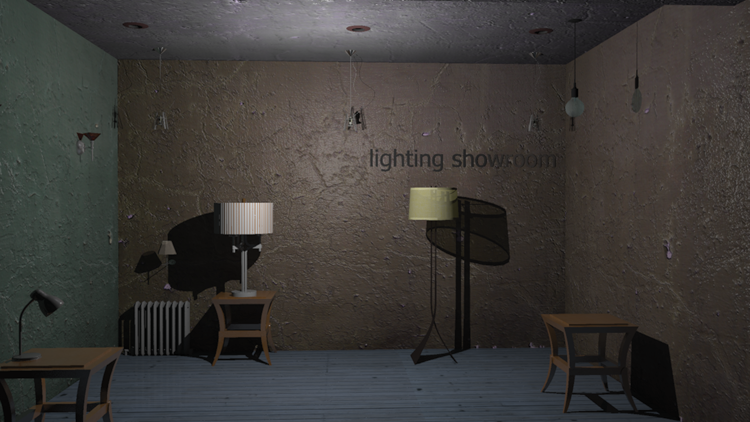Types of Lighting
Point lights, spotlights, light-emitting materials (LEMs), and IES profile lighting comprise the backbone of simulated light in renderings. Collectively, these lighting elements are called emitters. As strange as it seems, none of these lights is self-illuminating (Fig. 24.5, Fig. 24.6). They cast light and make visible their surroundings—i.e., surfaces that are reflecting the light back. They are not visible themselves, as is a typical lightbulb.
Fig. 24.5: The point light at the center of this SketchUp model will illuminate the entire scene.

Fig. 24.6: The point light lights up the rendering. However, there is no visible light source.

Point Lights
A point light, also called an area light, is a single point of light that casts light in all directions. Point lights can be placed behind shades, glass, and similar transparent surfaces to cast light through them. A point light is the simplest form of simulated lighting used in IRPs (Fig. 24.7, Fig. 24.8, Fig. 24.9).
Spotlights
Spotlights, also called directional lights, are emitters that cast light in a specific direction. Spotlights can be used to direct a light in a specific line of sight over long distances (Fig. 24.10, Fig. 24.11, Fig. 24.12).
Fig. 24.7: SketchUp view of point light placed inside the lamp ...
Get Rendering in SketchUp: From Modeling to Presentation for Architecture, Landscape Architecture and Interior Design now with the O’Reilly learning platform.
O’Reilly members experience books, live events, courses curated by job role, and more from O’Reilly and nearly 200 top publishers.

